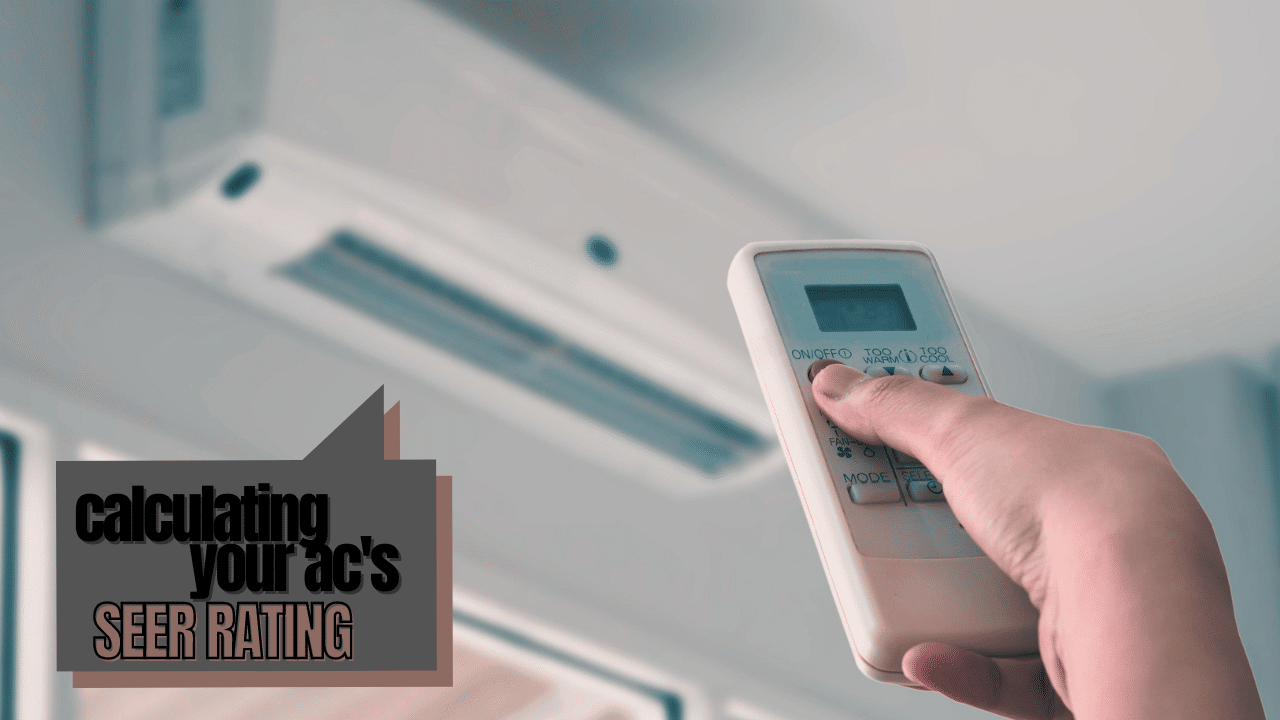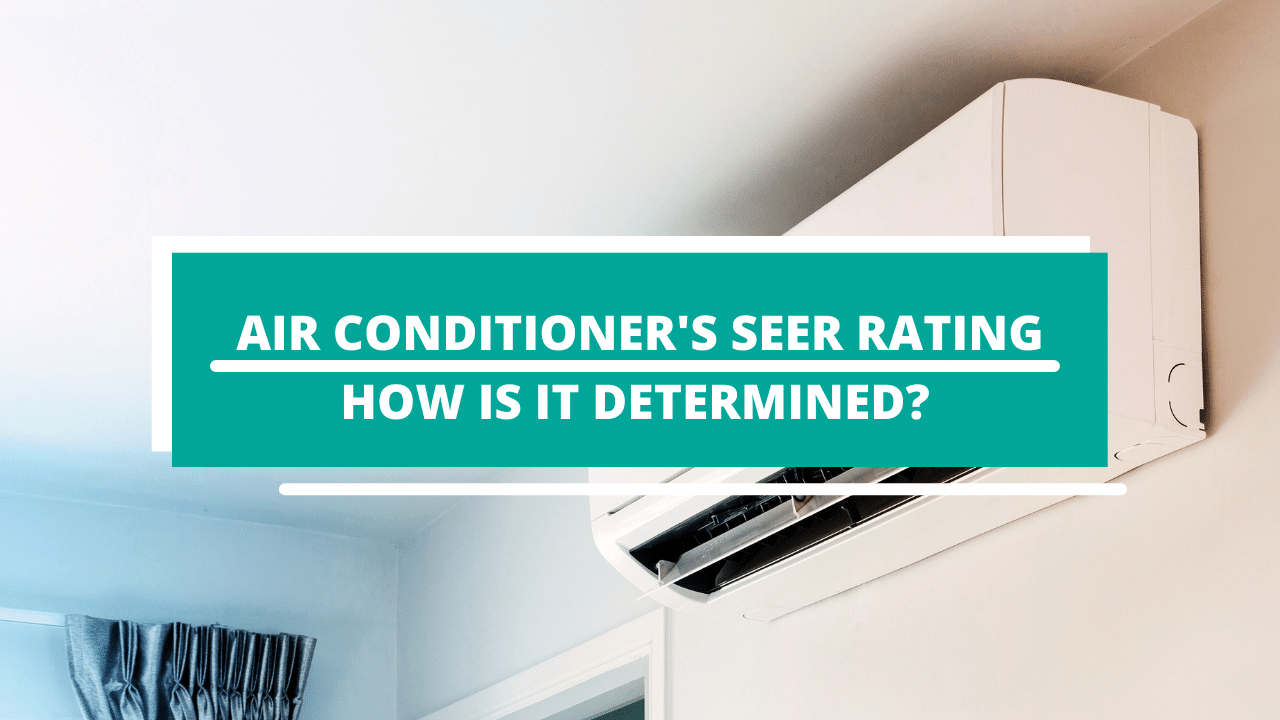When you are shopping for a new air conditioner, you will see a lot of different “industry jargon” terms thrown around. These terms can be confusing, especially when you are trying to figure out the best air conditioner to buy for your home.
In this article, we will be discussing one of these terms in detail: SEER Rating. Now, you will be able to know everything you need about this crucial aspect of air conditioners, so you can make the best decision for your new equipment.
What does SEER Rating mean?
SEER is short for “Seasonal Energy Efficiency Ratio.” It is the standard used in the United States to determine how efficient an air conditioner or heat pump is at cooling the air in a home, business, or other building. There are similar standards in the United Kingdom and the European Union, but SEER specifically refers to the United States standard.
In essence, the SEER Rating of your air conditioning unit will tell you roughly how efficiently it will keep your home cool throughout the warmer months of the year. The higher the rating, the more efficiently you can expect the unit to perform, and the more significant the savings you can expect on your energy bill each year compared to less efficient units – those with lower SEER ratings. (Related: What Is A SEER Rating And What Does It Mean For Florida Residents)

How is SEER determined?
There is a particular mathematical formula used to figure out how efficient an air conditioner will be over a season of typical use. The SEER is calculated by: dividing the total cooling output during a typical cooling season by the total electric energy input during that same cooling season.
In other words, an air conditioner’s SEER is calculated by looking at how much total energy it takes for that unit to operate in an entire year, and how well it uses that energy to cool your home. The two units involved in calculating an air conditioner’s SEER rating in the United States are BTU and kWh. Additionally, the rating is determined by looking at those two factors over the course of a typical operational year.
What is British Thermal Units (BTU)?
It is a unit of heat, specifically the amount of heat required to raise the temperature of a single pound of water by one degree Fahrenheit. (It is actually roughly equivalent to calories in this way, which is a unit of heat in the metric system – the amount of heat required to raise a gram of water by one degree Celsius.) It is almost never used in a purely scientific context these days, having been replaced by other, more precise measurements of energy. However, it is commonly used in commercial and consumer settings.
Air conditioners and other parts of an HVAC system sold in the United States usually use BTU as a standard measurement to show how much heat a piece of equipment adds to or removes from the atmosphere. BTU is also used in calculating the price of natural gas in the United States (which, if you’re curious, is the estimated cost in dollars to buy enough natural gas to generate one million BTU if it were to be burned).
So, understanding what BTU is, we can see why it is used in calculating the SEER rating for air conditioning units. The more BTU an air conditioner can move, the more powerful a cooling effect it will have in the area it is installed in.
What is Kilowatt-hours (kWh)?
It is a unit of energy used most often for billing purposes by electric utility companies. As the name suggests, it is the amount of energy of a kilowatt being sustained for an hour. To make it a bit simpler to understand, an air conditioner that is consuming 1000 watts over the course of a single hour is operating at precisely one kWh of energy. However, let’s say you have a fan that uses 100 watts during its regular use. If it runs for ten hours, it also uses one kWh of energy over that ten hour period.
It is not uncommon for kilowatt hours to be confused with kilowatts, especially as a layperson. The terms can be a little confusing. The thing to remember is that kilowatts are the unit of power, and kilowatt hours are a unit of energy.
How are they different? Energy (kWh) is the measurement of work being performed, from a physics standpoint. Power (kW) is the rate that energy is delivered. Think of it like a battery, which has a finite amount of energy stored inside it; a device that is more powerful uses more of that stored energy in a shorter period of time.
When we look at kWh in this way, we can see why it is one of the units of measurement used for calculating the SEER rating of an air conditioner. Kilowatt hours in this context refers to how hard the device is working, or how much energy it is using to accomplish its task.
Put another way, an air conditioner’s kWh rating is how many kilowatts your air conditioner uses per hour when it is operating.
What is a Typical Operational Year?
The final factor when calculating the SEER rating is the amount of hours an air conditioner is expected to operate in a typical year. The “standard” number is around 1000 operating hours over the course of the year.
This breaks down to 8 hours of operation over the course of 125 days, or about 4 months.
Now, unless you live in a very mild climate, 1000 hours is not going to be a realistic estimate for “real world” use. Do not get hung up on that particular detail, though. Just because most air conditioners will probably run more than eight hours a day for four months of the year does not mean you can’t get an accurate representation of how energy efficient an air conditioner is. It simply means that the “expected energy cost” you will see on the unit will probably not reflect reality, as it is usually estimated under the assumption that the air conditioner will only run for about eight hours a day.
But in any case, when calculating the SEER rating of an air conditioner, the “typical operational year” is assumed to be about 1000 hours of use.

Calculating the SEER Rating of a Device
So now that we understand the three components of the basic formula that are used to determine the SEER, let’s see how they all come together.
As we said before, the SEER is the cooling output (measured in BTU) of an air conditioner during a typical cooling season (which is set at 1000 hours), divided by the amount of energy used during that same typical cooling season.
Now, this ends up looking like there may be some redundant information – the typical cooling season. But getting rid of that information only gives us a part of what we need. Without taking the amount of operational hours in a typical cooling season into account, we are only left with “the cooling output of an air conditioner divided by the amount of energy it uses.” This is not enough information to be useful, so the added variable of “the typical cooling season is used.
By dividing the number of BTUs used in the summer months by the number of kilowatt hours consumed during those same months, we arrive at the Seasonal Energy Efficiency Ratio (SEER).
Conclusion
Taking all of the information above into account, the SEER rating can actually give a pretty good idea of how efficiently an air conditioner will work. Even if the numbers end up looking kind of arbitrary at first, you can see by looking at the different factors that go into calculating the SEER that it will tell you the ratio of cooling output to energy consumption.
You see, it is not enough to simply know how much energy a device is going to consume. A device may use very little energy, but it may also output very little cool air. The opposite is also true: a device may output a massive amount of cool air, but it may also consume a lot of energy. The ratio of how efficiently an air conditioner uses the energy it consumes to cool your home is the key reason SEER exists and is the standard used to determined energy efficiency for home cooling.
Additionally, it can actually give you a decent idea of how much it will cost you to operate an air conditioner over the course of a year. Even if the estimated costs printed on the appliance’s label are not accurate to your area, you can still use the SEER rating to get a good idea of how much that device will cost to operate.
SEER Rating: Frequently Asked Questions (FAQs)
The answer to that question depends on a few different factors: the climate in the region you live in, the condition of your home and how well it is sealed from the outside (via the home’s insulation as well as leaks around windows and doors), and how much heat your home tends to trap in the summer months for other reasons (like a hot kitchen).
Since 2015, different regions of the United States have had different minimum SEER ratings for new air conditioning units being installed. In the Southeastern United States (Alabama, Arkansas, Delaware, Florida, Georgia, Hawaii, Kentucky, Louisiana, Maryland, Mississippi, North Carolina, Oklahoma, South Carolina, Tennessee, Texas, and Virginia) and the Southwestern United States (Arizona, California, Nevada, and New Mexico), the minimum SEER rating for new air conditioners is 14. In the rest of the country, the minimum rating is 13 SEER.
While you will sometimes find used air conditioners on the market that have a SEER rating of less than the minimum, it is generally not advisable to go that route. For one, a lower SEER rating will end up costing you more on your monthly utility bills during the heat of the summer. For two, an older unit is likely to have been subject to significant wear and tear already in its life, and will need to be replaced with a new unit relatively soon anyway because of hardware failures. And finally, the minimums are set this way for a reason: lower SEER ratings pull more power from the electrical grid and put more strain on your home’s electrical system.
If you are on a really tight budget, you can certainly go with the minimum SEER rating for your area, but keep in mind that you may have lower costs in the long run with a more efficient unit.
Naturally, the answer to this question is complicated, but just like the question of “should I just go with the minimum SEER?” the short answer is “probably not.”
Keep in mind that SEER is a ratio based on how efficient an air conditioner is at cooling the air. If you are in an area where the climate is particularly hot and humid for more of the year, a higher SEER rating is going to be particularly beneficial to you. But if you live in a cooler region, you will probably not see a return on your “extra SEER” investment for a very long time, if at all.
In places where the air is hotter and more humid, more efficient means of controlling the temperature will be of greater benefit to you. This is because a more efficient a/c unit will actually make up the difference in cost much more quickly in a hotter and more humid climate than the same high SEER rated unit will in a region with more mild summers.
If your home or building has issues with ventilation leaks (for instance: the windows and doors are not properly sealed), you may find a higher SEER rated air conditioning unit to be worth it even if the building is in a region with more mild summers. This is because a higher SEER rating means that the unit will not have to work as hard in order to cool the air in the building, so if air is escaping, you can still have a pleasant environment. This is also the case if your home’s kitchen tends to trap heat, and you use the stove and oven frequently throughout the hotter months of the year. If your kitchen is poorly-ventilated, your home will need more help staying cool, so you may be better off getting a more energy efficient air conditioner.
However, you are generally going to be better off getting an air conditioner with a SEER rating that is more standard for your region. Unless your home has a tendency to get unreasonably warm relative to other homes in your area, you probably will not see as much in the way of long-term savings by investing in a higher SEER rated air conditioner.
Air conditioners with particularly high SEER ratings will need to run for longer or under greater “strain” (as in, your home needs to be particularly susceptible to being really hot in the summer for long periods of time) in order for you to start seeing cost savings.
The answer to that, as we have shown, depends on a variety of factors. In order to figure out the best SEER rating for your new air conditioner, you should take stock of all the factors we mentioned above and then discuss the matter with your HVAC company.
The fact there is a minimum SEER rating does not actually say anything about whether or not that minimum is the most appropriate choice for your application. Keep in mind that there are a lot of different air conditioners available at SEER ratings much higher than the minimum requirement for your region.
On the other hand, your home may not need as much cooling power, so an air conditioner that far exceeds the minimum SEER rating in your region may not be worth it. The cost difference between units that meet the minimums and units that are close to the maximum available SEER rating on the marker (comparing “like to like” in terms of square footage covered by the unit) can sometimes be over $1000, so consider whether or not that would be a worthy investment for you.
Due to the changes in the climate in many regions of the United States, many homeowners are opting to invest in new air conditioners with higher SEER ratings than the minimum requirement, so they can keep their homes cooler while also keeping their monthly utility bills reasonable. But the best way to determine the best SEER rating for your specific application is to talk with a licensed HVAC professional who has a lot of experience with installing new air conditioning units in your area.

